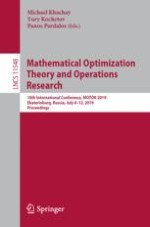This book constitutes the proceedings of the 18th International Conference on Mathematical Optimization Theory and Operations Research, MOTOR 2019, held in Ekaterinburg, Russia, in July 2019.
The 48 full papers presented in this volume were carefully reviewed and selected from 170 submissions. MOTOR 2019 is a successor of the well-known International and All-Russian conference series, which were organized in Ural, Siberia, and the Far East for a long time. The selected papers are organized in the following topical sections: mathematical programming; bi-level optimization; integer programming; combinatorial optimization; optimal control and approximation; data mining and computational geometry; games and mathematical economics.
